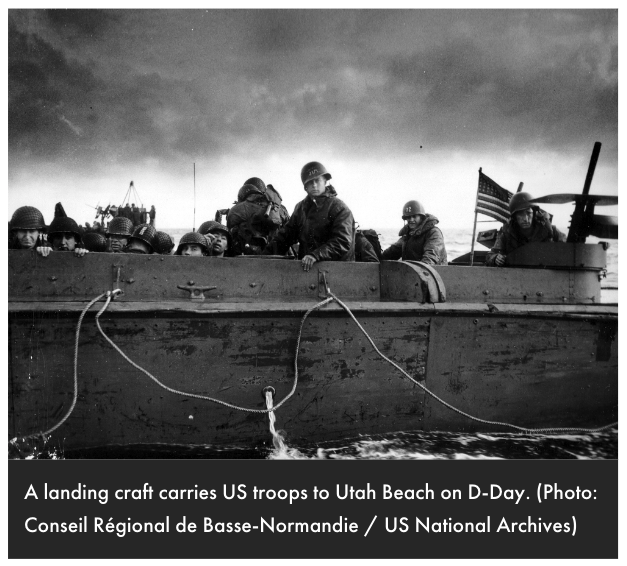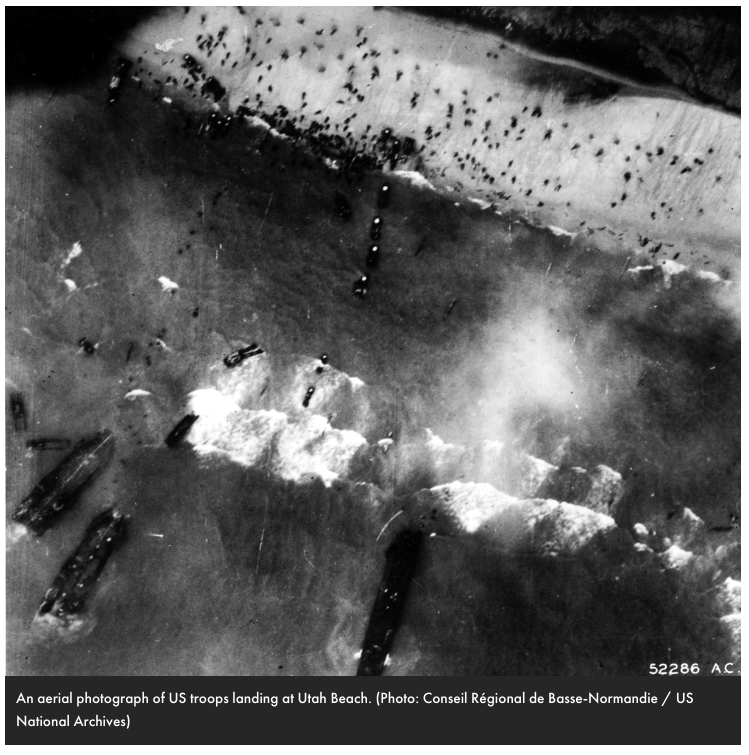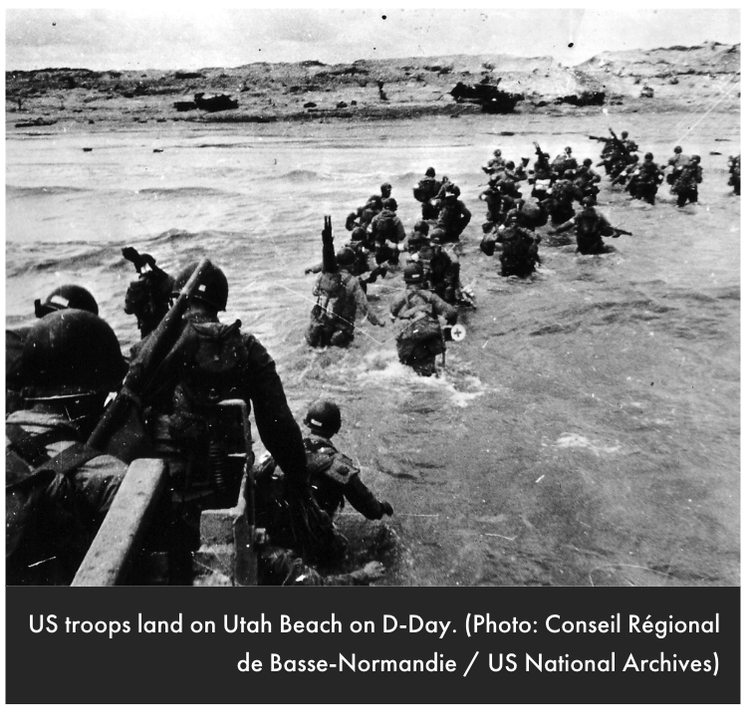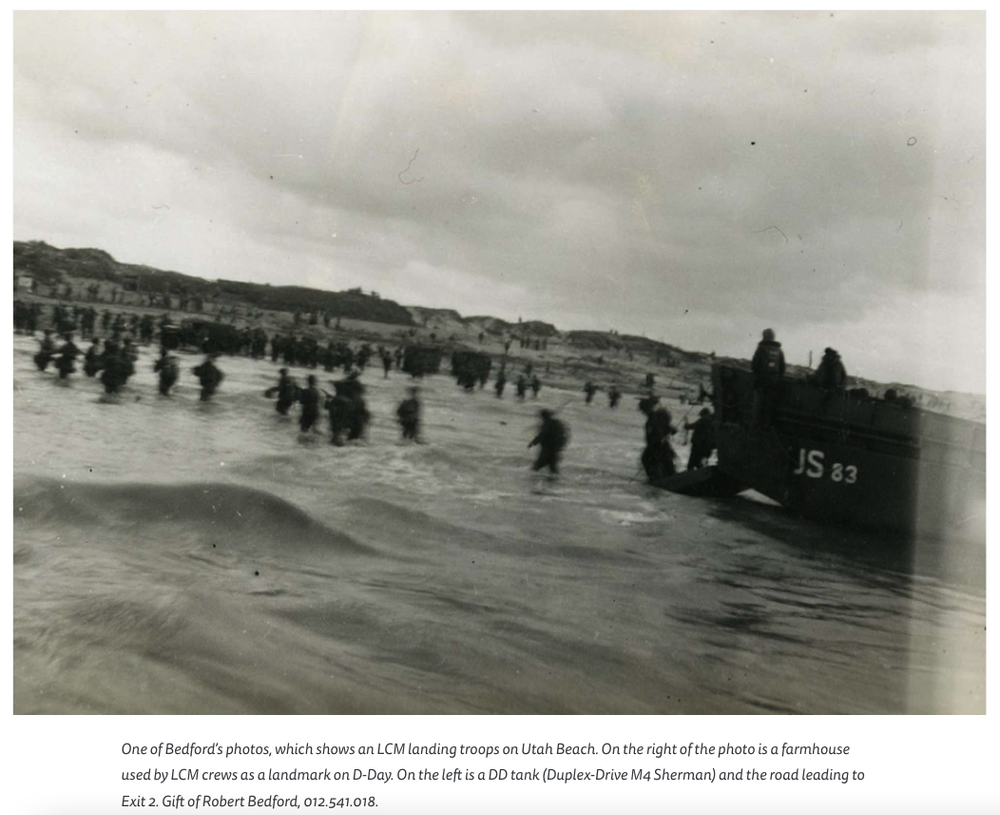EXTREMELY RARE! WWII D-Day OPERATION OVERLORD Utah Beach Higgins LCVP Boat Drop Ramp Bolt Recovered in 1957*



















EXTREMELY RARE! WWII D-Day OPERATION OVERLORD Utah Beach Higgins LCVP Boat Drop Ramp Bolt Recovered in 1957*
Comes with hand-signed C.O.A.
*ONCE IN A LIFETIME CHANCE TO OWN AN EXTREMELY RARE PIECE OF D-DAY HISTORY!
This extremely rare and museum grade World War II D-Day Utah Beach artifact is a heavy bolt from the drop down ramp of the Higgins Landing Craft Vehicle Personnel (LCVP). On June 6, 1944, thousands of Allied troops landed across five beaches (OMAHA, UTAH, GOLD, SWORD, and JUNO) on the coast of Normandy, France. It was the long-awaited invasion, a great Allied thrust upon which the hopes of millions of Europeans lay. One of the major associations that has become firmly entrenched in our collective memory of D-Day is the “Higgins boat.” An estimated 1,500 were used on June 6 to land troops and vehicles on French shores.
Only four causeways lead away from the beach through an area that has been flooded by the German defenders. The US Airborne forces land early in the morning to take control of the inland ends of these causeways, as well as other key roads and bridges. They then have to hold these objectives until troops from the beach landings can reach them.
This Higgins LCVP bolt was discovered in 1957 where since June 6th, 1944 it lay hidden under the Normandy ocean and sand of Utah Beach. The entire Higgins LCVP drop-down ramp door was professionally recovered and preserved. It is believed that this LCVP drop-down ramp discovered on Utah Beach was from one of the leading LCVPs that landed prior to mines and beachhead obstacles being cleared.
During the D-Day invasion of Utah Beach the Airborne landings begin at 0015 and the H-Hour beach landings began at 0630 on June 6th, 1944. The first troops to reach the shore were four companies from the 2nd Battalion, 8th Infantry, arriving at 06:30 on 20 LCVPs. Companies B and C landed on the segment code-named Tare Green, and Companies E and F to their left on Uncle Red. Leonard T. Schroeder, leading Company F, was the first man to reach the beach. The landing craft were pushed to the south by strong currents, and they found themselves near Exit 2 at Grande Dune, about 2,000 yards (1.8 km) from their intended landing zones opposite Exit 3 at Les Dunes de Varreville. The first senior officer ashore, Assistant Division Commander Brigadier General Theodore Roosevelt Jr. of the 4th Infantry Division, personally scouted the nearby terrain. He determined that this landing site was actually better, as there was only one strongpoint in the immediate vicinity rather than two, and it had been badly damaged by bombers of IX Bomber Command. In addition, the strong currents had washed ashore many of the underwater obstacles. Deciding to "start the war from right here", he ordered further landings to be re-routed.
The second wave of assault troops arrived at 06:35 on 32 LCVPs. Companies A and D of 1st Battalion, 8th Infantry landed on Tare Green and G and H on Uncle Red. They were accompanied by engineers and demolition teams tasked with removing beach obstacles and clearing the area directly behind the beach of obstacles and mines.
A contingent of the 70th Tank Battalion, comprising 32 amphibious DD tanks on eight LCTs, were supposed to arrive about 10 minutes before the infantry. However, a strong headwind caused them to be about 20 minutes late, even though they launched the tanks 1,500 yards (1,400 m) from shore rather than 5,000 yards (4,600 m) as planned. Four tanks of Company A and their personnel were lost when their LCT hit a mine about 3 miles (4.8 km) south of Iles St. Marcouf and was destroyed, but the remaining 28 arrived intact.
The third wave, arriving at 06:45, included 16 conventional M4 Sherman tanks and 8 dozer tanks of the 70th Tank Battalion. They were followed at 06:37 by the fourth wave, which had eight LCMs and three LCVPs with detachments of the 237th and 299th Combat Engineer Battalions, assigned to clear the beach between the high and low water marks.
Company B came under small arms fire from defenders positioned in houses along the road as they headed to the enemy strongpoint WN7 near La Madeleine, northwest of La Grande Dune and 600 yards (550 m) inland. They met little resistance at WN7, the headquarters of 3rd Battalion, 919th Grenadiers. Company C disabled the enemy strongpoint WN5 at La Grande Dune, which had been heavily damaged in the preliminary bombardment. Companies E and F (about 600 men) proceeded inland about 700 yards (640 m) to strongpoint WN4 at La Dune, which they captured after a short skirmish. They next travelled south on a farm road parallel to the beach towards Causeway 1. Companies G and H moved south along the beach toward enemy strongpoint WN3 at Beau Guillot. They encountered a minefield and came under enemy machine gun fire, but soon captured the position. 70th Tank Battalion was expecting to have to help neutralize beach fortifications in the immediate area, but since this job was quickly completed by the infantry, they had little to do initially. The landing area was almost totally secure by 08:30, at which point combat teams prepared to push further inland along the causeways. Meanwhile, additional waves of reinforcements continued to arrive on the beach.
Removal of mines and obstacles from the beach, a job that had to be performed quickly before the tide came in at 10:30, was the assignment of 237th and 299th Combat Engineer Battalions and the eight dozer tanks. The teams used explosives to destroy beach obstacles and blow gaps in the sea wall to allow quicker access for troops and vehicles. The dozer tanks pushed the wreckage out of the way to create clear lanes for further landings.
D-Day Utah Beach Landing Timeline:
0015
The first airborne pathfinders (101st US Airborne Division) land by parachute and quickly set up beacons to guide in the main body of airborne troops.
0019
The main body of 101st US Airborne Division begins landing by parachute and glider several miles behind the beaches. Many of the airborne troops are widely scattered and will take hours to re-group. Some paratroopers drop into flooded areas and drown.
0200
The main force of 82nd US Airborne Division begins landing. Some land in and around the town of Sainte Mère Église, a key objective.
0335
Heavy bombers of RAF Bomber Command attack German coastal gun batteries near Utah Beach. Their aim is to disable these batteries so they cannot fire on US troops who will land on the beaches in a few hours' time.
0405
Landing ships miles offshore begin lowering the landing craft that will take the assault infantry to the beach. Many troops have to climb down cargo nets from the ships into the landing craft.
0435
First waves of landing craft head for the beach.
0536
Allied warships begin firing their guns against the German defences. There are exchanges of fire between several warships and German coastal guns.
0600
Support landing craft begin firing guns and rockets against German defences along the beach.
0630
The first US troops (8th Regimental Combat Team) come ashore on schedule, but land at least 1,500 yards to the south of the intended sector. Fortunately this area is more lightly defended than their original objective. Shortly afterwards, most DD (swimming) tanks land successfully, though later than originally planned.
0800
Brigadier General Theodore Roosevelt orders in follow-up troops. He decides to continue at the new landing site rather than reverting to the original one. US engineers are clearing beach obstacles so that follow-up landing craft can get to the beach in more safety.
0900 – 1000
US troops begin moving off the beach, along two of the four causeways. Meanwhile further inland, German forces fiercely counter-attack the positions held by US airborne troops.
1100 – 1200
As US troops advance further inland there is still some German resistance and artillery fire. Some Americans wade through flooded areas in order to reach their objectives. US troops advancing off the beach link-up with 101st US Airborne Division.
2100 – 2300
The final US airborne troops arrive by glider to reinforce 82nd Airborne Division.
2400
Utah Beach: At the end of D-Day: After being scattered during their landings, only 2,500 out of 6,600 US airborne troops have so far regrouped. Troops who landed on the beach have reached 101st US Airborne Division, but have not yet fully linked up with 82nd US Airborne Division who landed further to the west.
2400
Casualties at Utah Beach on D-Day: Total casualty figures for D-Day were not recorded at the time and are difficult to confirm in full. In the airborne landings 2,499 men became casualties, including 238 killed. Of the troops landing on the beaches, 589 were casualties including 197 who died. At Utah Beach there were also 235 naval and 340 air forces casualties. German losses here are unknown.
Utah Beach:
Utah, commonly known as Utah Beach, was the code name for one of the five sectors of the Allied invasion of German-occupied France in the Normandy landings on June 6, 1944 (D-Day), during World War II. The westernmost of the five code-named landing beaches in Normandy, Utah is on the Cotentin Peninsula, west of the mouths of the Douve and Vire rivers. Amphibious landings at Utah were undertaken by United States Army troops, with sea transport, mine sweeping, and a naval bombardment force provided by the United States Navy and Coast Guard as well as elements from the British, Dutch and other Allied navies.
The objective at Utah was to secure a beachhead on the Cotentin Peninsula, the location of important port facilities at Cherbourg. The amphibious assault, primarily by the US 4th Infantry Division and 70th Tank Battalion, was supported by airborne landings of the 82nd and 101st Airborne Division. The intention was to rapidly seal off the Cotentin Peninsula, prevent the Germans from reinforcing Cherbourg, and capture the port as quickly as possible. Utah, along with Sword on the eastern flank, was added to the invasion plan in December 1943. These changes doubled the frontage of the invasion and necessitated a month-long delay so that additional landing craft and personnel could be assembled in England. Allied forces attacking Utah faced two battalions of the 919th Grenadier Regiment, part of the 709th Static Infantry Division. While improvements to fortifications had been undertaken under the leadership of Field Marshal Erwin Rommel beginning in October 1943, the troops assigned to defend the area were mostly poorly equipped non-German conscripts.
D-Day at Utah began at 01:30, when the first of the airborne units arrived, tasked with securing the key crossroads at Sainte-Mère-Église and controlling the causeways through the flooded farmland behind Utah so the infantry could advance inland. While some airborne objectives were quickly met, many paratroopers landed far from their drop zones and were unable to fulfill their objectives on the first day. On the beach itself, infantry and tanks landed in four waves beginning at 06:30 and quickly secured the immediate area with minimal casualties. Meanwhile, engineers set to work clearing the area of obstacles and mines, and additional waves of reinforcements continued to arrive. At the close of D-Day, Allied forces had only captured about half of the planned area and contingents of German defenders remained, but the beachhead was secure.
The 4th Infantry Division landed 21,000 troops on Utah at the cost of only 197 casualties. Airborne troops arriving by parachute and glider numbered an additional 14,000 men, with 2,500 casualties. Around 700 men were lost in engineering units, 70th Tank Battalion, and seaborne vessels sunk by the enemy. German losses are unknown. Cherbourg was captured on June 26, but by this time the Germans had destroyed the port facilities, which were not brought back into full operation until September.